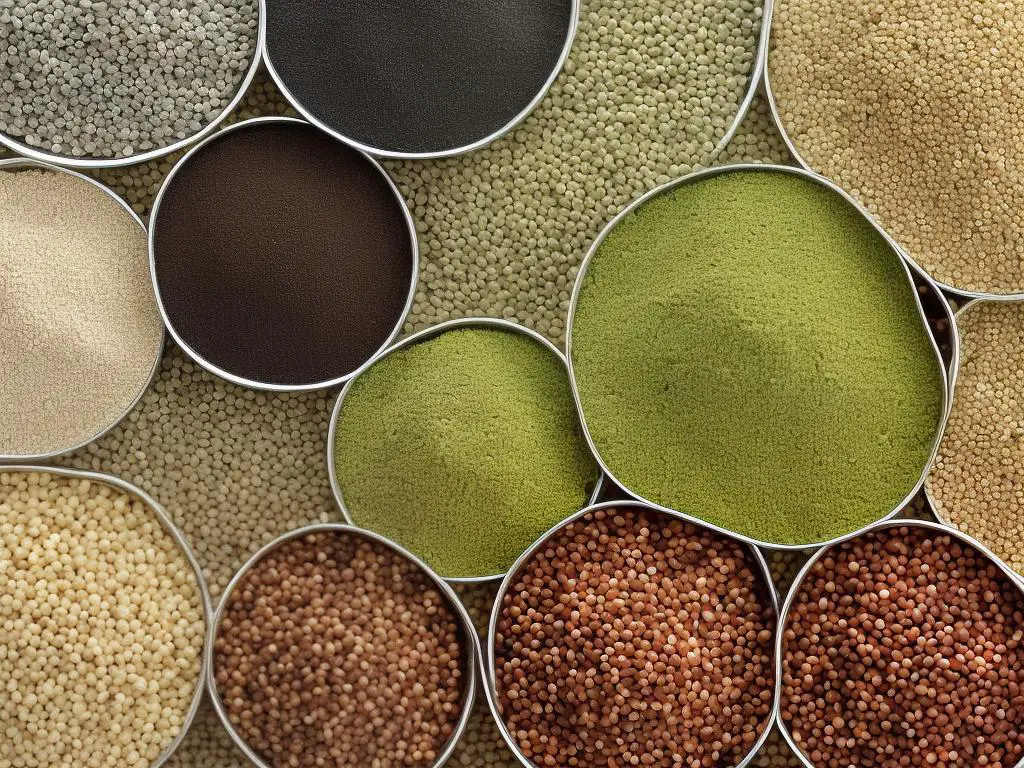Dragons have long captivated the imagination and fascination of societies across the globe, and our understanding of these compelling creatures is ever-evolving. With the potential to provide insights into a range of disciplines – from zoology and history to mythology and cultural studies – the study of dragon species is a rich and rewarding field of inquiry for industry experts. The objective of this essay is to offer a comprehensive look at various aspects of dragon species, including their classification, evolution, biology, behavior, and cultural significance, painting a detailed picture of these magnificent beings and their contributions to our collective human experience.
Classification and Types
Classification and Habitat
Dragons are captivating creatures, often characterized by their large size, wings, and fire-breathing abilities. They can be found in various habitats and cultures, each with unique characteristics and legends tied to them. To effectively study these creatures, one must classify them based on their habitat, such as terrestrial, aquatic, or airborne dragons.
Terrestrial Dragons
Residing in forests, mountains, caves, or deserts, terrestrial dragons are often associated with earth-based elements and master the art of camouflage. Notable terrestrial dragons include the European dragon, recognized for its fire-breathing capabilities and fearsome appearance, and the Eastern dragon, which symbolizes good fortune and wisdom in many Asian cultures.
Aquatic Dragons
Aquatic dragons inhabit lakes, rivers, and oceans, possessing essential water-based features like fins, gills, and the ability to swim at excellent speeds. The Scottish Loch Ness Monster is often considered a type of aquatic dragon, as is the Chinese Jiaolong, or “dragon of the deep,” believed to rule over bodies of water and control the weather.
Airborne Dragons
Making their homes in the sky, on mountaintops, or in high-altitude nests, airborne dragons are characterized by large wings and swift movements. Examples include the two-legged, large-winged European Wyvern.

Dragon Evolution and History
Anatomy and Physiology
The anatomy and physiology of dragons can vary greatly depending on their habitat, classification, and cultural influences, often possessing a mix of reptile, bird, and mammalian features like scales, feathers, and fur. Additionally, dragons are usually depicted with sharp teeth, claws, and long, sinuous tails.
Unique dragon features include emitting fire or other substances from glands in their mouths or throats, such as the European dragon’s fire-breathing ability and the Slavic Zmey Gorynych, a three-headed fire-breathing dragon.
Some species of dragon can shapeshift or change their appearance, with many Eastern dragons holding this power to transform into humans, animals, or even objects.
From Mythical to Real Dragon Species
Dragons have historically been considered mythical creatures in legends, folklore, and stories. While no solid evidence of their existence has been found, these tales point to the greater significance of dragons in human culture. In some instances, real-life animals may have inspired legends, such as the Komodo dragon, mistaken for a mythical dragon due to its impressive size and ferocious appearance.
Mythical dragons often hold divine or magical powers and are revered as gods or protectors in human cultures, like the Chinese dragon symbolizing power and good luck, and the Mesoamerican Quetzalcoatl, a deity associated with wind, air, and learning.
Even as mythical creatures, dragons captivate worldwide imaginations. Understanding their diverse classifications, anatomy, and cultural connections allows aspiring dragon experts to gain a deeper appreciation of these powerful, enchanting creatures. Exploring the world of dragon species provides insight into the human fascination with them and bridges the gap between myth and reality.
Early Origin of Dragons
Dragons have been vital components of folklore and mythologies across various cultures for centuries. Earliest depictions can be traced back to the ancient civilizations of Mesopotamia and Egypt, where they were believed to be divine beings with extraordinary powers. While dragons were initially deemed mythical, a growing body of evidence supports the theory that they were real creatures that evolved into the legendary beasts we know today.
Fossil Records and Genetic Evidence
Fossil records suggest that the dragon species might have evolved from a group of ancient reptiles known as archosaurs, which lived during the Mesozoic Era. These reptiles eventually gave rise to modern-day crocodiles and dinosaurs. Some paleontologists posit that dragons closely resembled pterosaurs, the flying reptiles that dominated the skies in the age of dinosaurs. The similarities between these two species can be observed in their anatomy, shared wingspans, and unique reptilian features.
Further evidence supporting the existence of dragons can be found in discoveries of large-scale fossils that bear striking resemblance to dragon-like creatures. These fossils have been discovered across Europe, Asia, and Africa. Some scientists believe that dragons might have been a part of an isolated evolutionary line that developed specialized adaptations, such as reinforced skeletal structures and modified lungs to enable vast flights. Some researchers argue that certain dragon species, like those found in Chinese mythology, might have even possessed opposable thumbs and high levels of intelligence, which could explain their recurring role as guardians and advisers in ancient folklore.
Cultural Depictions and Impact on Ancient Civilizations
Dragons have been integral to various ancient cultures, such as the Chinese, Greeks, and Egyptians. In Chinese mythology, dragons were considered divine creatures and symbols of power, wisdom, and prosperity. The Chinese believed that an emperor’s right to rule was granted by the dragons, thus solidifying their importance in Chinese society. Similarly, in ancient Greek and Egyptian cultures, dragons held significant roles in their mythologies and were often associated with gods and goddesses.
One popular theory explaining the widespread cultural depictions of dragons is that ancient civilizations encountered large reptiles or fossilized remains they couldn’t explain and subsequently incorporated these creatures into their mythologies. As a result, dragons became symbols of power, wisdom, and chaos across various cultures.
Dragons in the Modern Era
Dragons, often viewed as legendary and mythical creatures, have recently become a topic of interest for industry experts, particularly due to advances in genetic research. There is a growing consensus among some researchers that there may be undiscovered dragon species still alive today, hidden in remote and unexplored environments. Additionally, the field of genetic engineering has opened up new possibilities for the re-creation of dragon-like organisms, raising ethical concerns and sparking debates among scientists.
As we uncover more evidence regarding the potential existence of dragon species, our understanding of these fascinating creatures and their role in our planet’s history continues to evolve. Regardless of whether dragons exist in reality or are simply a product of myths and legends, their impact on human history and culture is undeniable and deeply embedded in our collective imagination.

Dragon Physiology and Biology
General Anatomy and Physiology
Dragons, as mythical creatures, are frequently portrayed as large, powerful, reptilian beings with wings, sharp claws, and, in certain instances, the ability to breathe fire. Studying dragon physiology and biology, despite their fanciful origins, can offer invaluable insight into how these creatures might function and interact within their ecosystem. Variation in the specific characteristics of dragons is abundant across different folklore and mythologies. In this section, we will concentrate on examining the most common and prevalent features and adaptations that help define dragon species.
Skeletal Structure and Adaptations
The skeletal structure of a dragon plays a crucial role in their formidable size and agility. Dragons are typically depicted with an elongated, serpentine body and a long tail, which would require numerous vertebrae to facilitate movement and support. Their vertebrae would likely feature prominent processes, similar to those seen in crocodiles, to assist with muscle attachment and strength distribution.
Dragons are often characterized as having four limbs, in addition to their wings. In this case, the wings would function as a separate set of limbs, similar to bats or other quadrupedal fliers, rather than modified forelimbs. As a result, their pectoral girdle would be highly developed to support the additional weight and stabilizing force required for flight. The wings themselves might possess a bone structure akin to that of a bird or bat, with elongated, lightweight finger bones supporting a strong wing membrane.
Musculature and Locomotion
The musculature system of a dragon would likely be highly specialized to support their various modes of locomotion. To achieve flight, dragons require powerful wing muscles and the ability to lift and maneuver their large bodies in mid-air. It is possible that dragons possess a syringeal muscle, unique to birds, which allows for a more efficient distribution of muscular force throughout the wing. This, in turn, enhances their ability to generate lift and maintain flight.
On land, dragons are often depicted as moving with incredible speed and agility. This would necessitate a highly developed set of muscles in their limbs, similar to those found in large felines or reptiles like the Komodo dragon. Additionally, the prehensile tail commonly seen in dragon depictions could serve as both a weapon and a means of locomotion, aiding in balance and movement through complex terrains.
Respiratory and Circulatory Systems
A unique aspect of dragon physiology is their capacity for fire-breathing. To achieve this, dragons may possess a specialized gland that produces and stores flammable substances, such as phosphine, methane, or even hydrogen. A spark-producing mechanism, such as the highly reactive metals found in the venom of the spitting cobra, might be located in the dragon’s mouth or throat, allowing it to ignite the stored substances on command.
In addition to fire-breathing, the respiratory and circulatory systems of dragons would have to efficiently supply oxygen and nutrients to their large, active bodies. It can be postulated that dragons have a four-chambered heart, as seen in birds and mammals, to separate oxygen-rich blood from oxygen-poor blood and increase circulatory efficiency. Their lungs, similarly to birds, might possess a unidirectional airflow and air sacs that allow for continuous oxygen uptake, even during exhalation.
Sensory Systems and Cognitive Abilities
Dragons are often portrayed as highly intelligent creatures, capable of sophisticated decision-making and problem-solving. This may imply the presence of a large and well-developed brain, particularly in areas associated with learning, memory, and higher cognition. It can be hypothesized that dragons have keen senses to navigate their environment, including sharp eyesight, acute hearing, and a fine-tuned sense of smell.
Introduction to Dragon Species
An exploration into the world of dragon species reveals a fascinating array of adaptations that enable these mythical creatures to thrive in various environments. By analyzing dragon physiology and biology, we can uncover the secrets behind their unique capabilities, such as fire-breathing and specialized modes of locomotion. Gaining a deeper understanding of these captivating beings incites wonder and curiosity about the boundless possibilities of nature and imagination.

Dragon Behavior and Ecology
Dragon Behavior and Interactions
As we delve further into the study of dragon species, we uncover their enigmatic and highly intelligent nature. Dragons exhibit a broad spectrum of behaviors and interactions with multiple species within their ecosystem. One notable aspect is their hierarchical social structure, which involves dragons consistently engaged in establishing dominance among peers and other species. They communicate using various methods, such as body language, vocalizations, and visual cues like the color and patterns of their scales.
These mythical creatures are capable of demonstrating complex behaviors like problem-solving skills and cooperation within their societies. This often includes collaborative efforts to hunt for food, warn each other about potential dangers, and even forge alliances with different species. For instance, dragons have been known to form bonds with humans, acting as loyal companions and protectors in certain cases.
Mating Habits
Dragon mating rituals are another fascinating aspect of their behavior. These can vary significantly between species, but a common theme is the display of strength and vitality to attract a mate. Male dragons often engage in intensive aerial displays, showcasing their agility and power, while emitting loud, resonant calls to advertise their presence to potential mates. Female dragons, on the other hand, exhibit more subtle cues, such as change of coloration, scent marking, and vocalizations, to signal receptiveness to mating.
Typically, once a pair of dragons has been formed, they’ll engage in an elaborate courtship, often engaging in synchronized flights or carefully coordinated displays. After mating, dragons are known for their extraordinary parental care, which may involve activities such as building nests, guarding eggs, and teaching the young to hunt and navigate in their environment.
Dragon Ecology
The ecological roles dragons play within their ecosystems are diverse and vital. As apex predators in many habitats, dragons control prey populations, thus maintaining a balance in their respective ecosystems. In addition to managing the populations of their prey animals, dragons are also known to disperse seeds, subsequently encouraging plant growth and diversity.
Dragons inhabit various types of environments, from dense forests and soaring mountains to vast deserts and harsh tundras. In each of these habitats, dragons have adapted to optimize their chances of survival, with features such as specialized scales that enable effective camouflage, the ability to alter their body temperature in response to their environment, and obtaining sustenance through hunting and scavenging in a diverse range of food sources.
Conservation Efforts
With habitat destruction, hunting, and climate change posing significant threats to these magnificent creatures, conservation efforts are crucial for the long-term survival of dragon species. Organizations dedicated to dragon conservation focus on multiple strategies to protect and preserve dragon populations.
One approach is the establishment of protected areas, including national parks and wildlife reserves, which are designed not only to preserve critical dragon habitats but also to protect other species that live within these environments. Monitoring and research activities are also essential to understanding the ecology, behavior, and habitat requirements of different dragon species, allowing for more targeted conservation measures.
Similarly, education and outreach programs play a crucial role in changing perceptions and raising awareness of the importance of dragons in our ecosystems. By fostering a better understanding of these magnificent creatures and the crucial role they play in our world, we may be more inclined to preserve them for future generations.
Introduction to Dragon Species
Becoming an expert on dragon species involves understanding their behavior, ecology, and the mythology that surrounds these captivating creatures. Examining their interactions, mating habits, and ecological roles within their environment helps us to comprehend their significance in various cultures, as well as identify methods to protect and sustain their habitats. While there still remains an array of undiscovered aspects about these enigmatic beings, continued research and conservation efforts are crucial in ensuring their future survival.

Dragon Mythology and Cultural Influence
The Role of Dragon Mythology in Cultural History
As aspiring dragon experts, it’s essential not only to study their habitats and behaviors, but also the origins and developments of dragon mythology throughout human history. From Chinese legends to Western fairy tales, dragons have become both revered and feared symbols in diverse cultural narratives across the globe. Though their exact origin is unclear, it is believed that the idea of dragons began from early humans trying to make sense of fossils from prehistoric creatures like dinosaurs, as well as natural phenomena such as severe weather events. Understanding the cultural context of dragons will further our ability to appreciate and protect these fascinating creatures.
Eastern Dragon Mythology
In Eastern cultures, particularly in China and Japan, dragons are considered benevolent and wise beings, often associated with water and the life-giving power of rain. They are seen as bringers of good fortune and believed to have the ability to control the weather. Chinese dragons are often depicted as serpentine creatures with four legs and intricate, flowing tails. These dragons also figure prominently in Chinese imperial symbolism, with the emperor himself being considered as a “real” dragon, symbolizing power, wisdom, and influence.
In Japan, dragons show a similar symbolism: they are creatures of power and wisdom, usually associated with bodies of water. Local legends often portray the dragon as a guardian spirit or deity protecting a village or temple. Japanese dragons also share the serpentine appearance of their Chinese counterparts, and their close cultural ties only strengthen the links between these two representations.
Western Dragon Mythology
In contrast to Eastern dragons, Western dragon mythology tends to portray dragons as fearsome, destructive creatures, often with wings and the ability to breathe fire. Western dragons appear in the lore of ancient Greeks and Romans, as well as European mythology of the Middle Ages. They are commonly depicted as adversaries that must be overcome, symbolizing chaos or evil.
In ancient Mesopotamian and Near Eastern mythology, one can find the story of Tiamat, a primordial dragon-goddess of the sea who created the first generation of gods. Battles between gods and dragons are a common theme in these mythologies, exemplifying the concept of overcoming chaos with order, as can be seen in the story of Marduk and Tiamat.
In Norse mythology, dragons such as Fafnir and Jormungandr appear as destructive forces, while in British and Arthurian legends, dragons are often included as fantastic elements and creatures that need to be defeated by noble knights. One such example is the tale of Saint George, who is depicted as slaying a dragon to save a princess and her kingdom.
Cultural Impact
Dragons have stood the test of time in their cultural impact, as they continue to appear in popular literature, movies, and artwork. Themes of spirituality, transformation, and wisdom are often associated with the dragon’s image.
In the realm of literature, dragons have taken numerous forms, from malevolent beings in the works of J.R.R. Tolkien to the more benevolent creature in the series of books written by Ursula K. Le Guin. The dragon Smaug from “The Hobbit” represents the destructive force of greed, while the dragons of Le Guin’s Earthsea series symbolize a harmonious balance between humans and nature.
Dragons have also had a significant influence on modern gaming culture, where they are often depicted as highly powerful creatures that must either be defeated or tamed for the player to advance. The dragon as a formidable foe or potential ally can be seen in popular role-playing games, such as “Dungeons and Dragons” and video games like “Skyrim.”
Conclusion
The enduring fascination with dragons demonstrates that they remain an essential part of human imagination and culture. The continued exploration of their symbolism and significance guides us to a richer understanding of our collective past and the shared stories between different societies. This deeper insight into the roles played by dragon species throughout history, whether as agents of chaos or wisdom, guardians or adversaries – ultimately serves to broaden our perspectives and appreciation for these majestic creatures.

Through a thorough examination of dragon species – touching on their classification, historical evolution, distinctive physiology, unique behaviors, and broader cultural implications – we are able to gain a multifaceted understanding of these awe-inspiring creatures and their enduring impact on humanity. By melding empirical evidence from various fields of study with the rich tapestry of mythology and folklore that has grown around dragons throughout history, we can appreciate both their reality and their mystique. As scholars, it is our responsibility to continue exploring the many facets of dragon species and to unearth new discoveries that will allow us to deepen our knowledge and encourage the imaginative spirit that these creatures have inspired for countless generations.















































